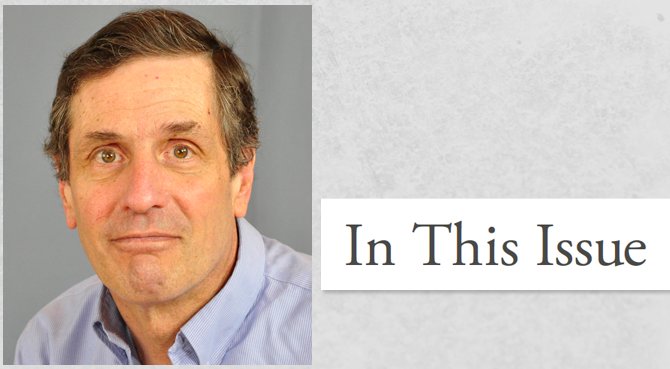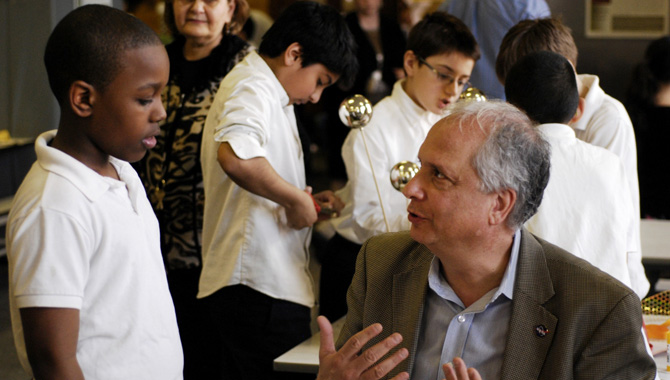
Don Cohen, Managing Editor
In “Our Knowledge Legacy,” NASA Chief Knowledge Officer (CKO) Ed Hoffman describes his visit with elementary-school children in Brooklyn, some of whom may become NASA engineers, scientists, or managers decades from now. Talking to those smart, enthusiastic students, he realized how important it is to preserve and transmit the agency’s rich store of knowledge so that future employees can build on it to advance aeronautics and space science and exploration. No NASA mission starts absolutely from scratch. They all depend on knowledge gained from the experience of earlier work. As several articles in this issue of ASK make clear, effectively fostering and sharing that knowledge demands thoughtfulness, skill, and creativity.
Edward Rogers, who has been Goddard’s CKO for more than a decade, shares lessons from “The Knowledge Management Journey,” including the importance of fitting knowledge activities to people’s specific needs and ways of working, rather than trying to impose pre-existing knowledge management techniques on them. Rogers has helped make “pause and learn” reflection and case-study discussion an integral part of work at Goddard.
In “Creating NASA’s Knowledge Map,” Matthew Kohut and Haley Stephenson discuss a new tool that shows the richness and diversity of knowledge work at NASA’s centers. As it continues to be enriched and refined, the map is likely to be a valuable way to locate essential knowledge anywhere in the agency. That matters because the knowledge required to solve a problem or avoid disaster almost always exists somewhere in the organization. But it is not always available to the people who need it to make sound decisions. Sometimes that knowledge is discounted or ignored, a point Pedro Ribeiro makes in “Predictable Surprises: Bridging Risk-Perception Gaps.” He outlines a technique for addressing that danger.
Of course NASA is also in the business of developing new expertise. In “Back to the Future: KSC Swamp Works,” Kerry Ellis describes labs at Kennedy Space Center designed to create knowledge by bringing together people with diverse backgrounds and by hands-on experimentation, building prototypes that teach the experimenters things they could never have learned from abstract planning or design. Aware of the importance of making what they discover available to others, the Swamp Works teams are also careful to document their work as they go along.
Laurie Stauber’s “University Capstone Projects: Small Investments, Big Rewards” describes another way to acquire new knowledge. Glenn Research Center partners with several universities on student projects that explore space-medicine issues, providing valuable experience for the students and valuable learning to NASA.
The right knowledge is essential to project success but not sufficient to make it happen. A couple of articles in this issue demonstrate the importance of leadership and good communication. In “The Road to New Flight Software,” Christopher Krupiarz shows how the Applied Physics Laboratory at Johns Hopkins worked with several NASA centers to build complex new software. And Keith Woodman and Debi Tomek’s “Lessons on Leadership: The Evolution of the Radiation Protection Project” describes the skilled leadership that kept a project alive and well in spite of numerous changes that could have killed it.
Don Cohen
Managing Editor
More Articles by Don Cohen
- In This Issue (ASK 50)
- Building a Better Telescope: The Legacy of NASA’s Balloon Missions (ASK 50)
- In This Issue (ASK 49)
- Interview with Alan Lindenmoyer (ASK 49)







